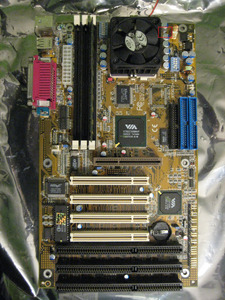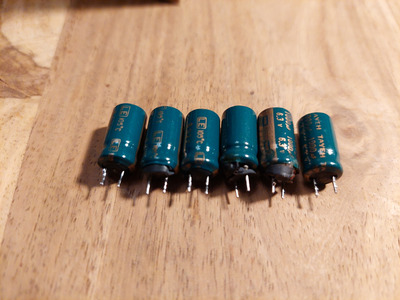First post, by RaiderOfLostVoodoo
- Rank
- Member
The board in question:

DFI K6XV3+/66 Rev:B2
My buddy Hirsch changed the capacitors with polymer caps from Kemet and Nichicon.
After the recapping my board can no longer boot into WinXP if I run my K6-2/500AFX at stock voltage (2.2V). However it can boot into Win98, but I assume it would eventually crash. Overvolting the CPU to 2.4V doesn't change anything. It still freezes during WinXP boot.
If I downclock it to 100MHz*4.5, I can boot into WinXP. I can even downvolt to 1.55V. At 1.5V it crashes during boot and restarts.
My K6-III+/400ATZ also behaves strangely. It can run at the stock voltage (1.6V). At 1.7V I can even overclock it to 100MHz*5.5, but after that I do hit a wall. I can't get 100MHz*6 stable. Not even at 2.4V. 41% overvoltage not enough for 9% overclock? This can't be!
I assume the board can't deliver more than 1.8V or something like that. I can't measure the voltage, because I don't have equipment for that. Gonna have to wait until Hirsch is in the area again (probably around Easter I guess).
We suspect that a loose soldering point might cause the issues. But which capacitor? Resoldering them all takes way too long.
Any advice?

